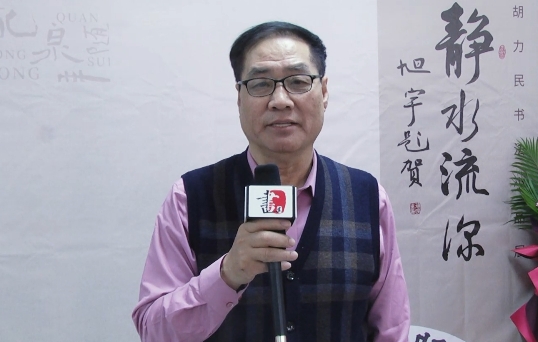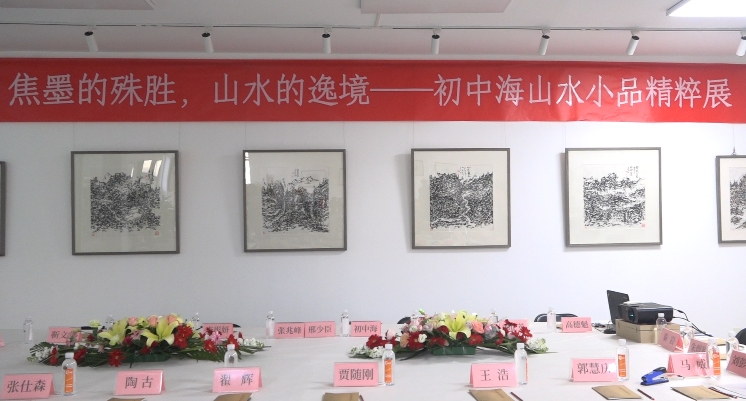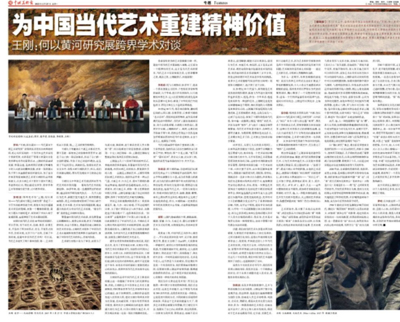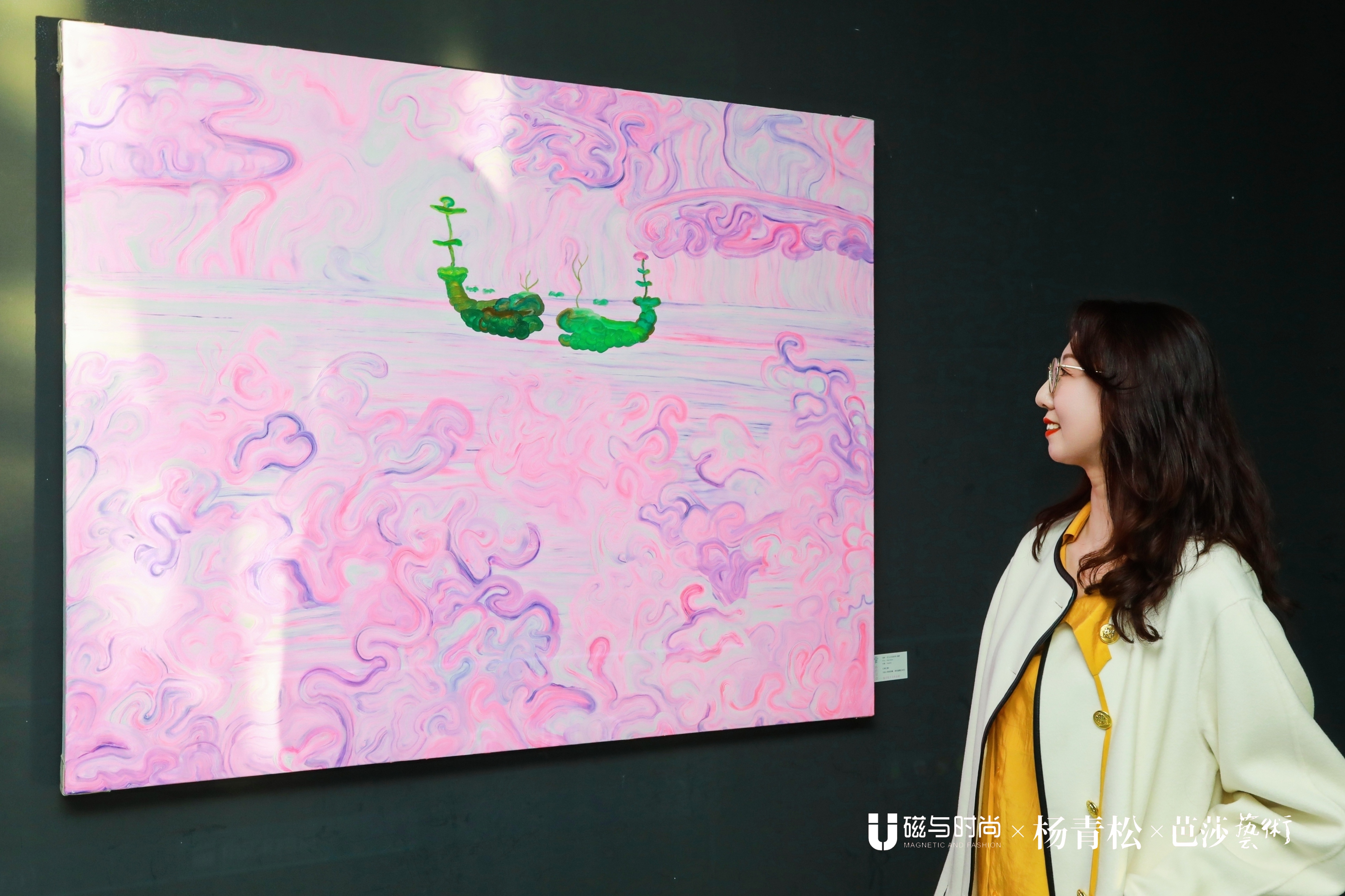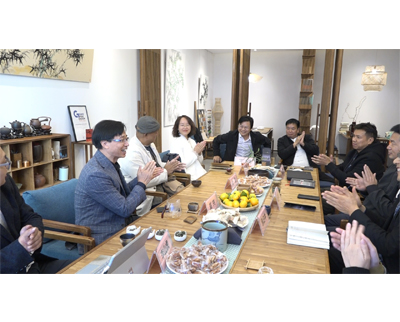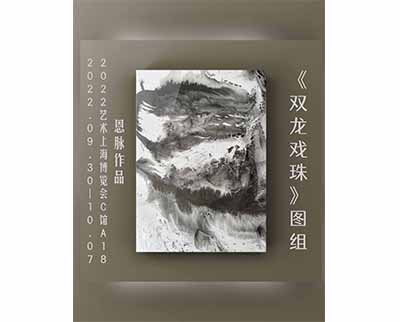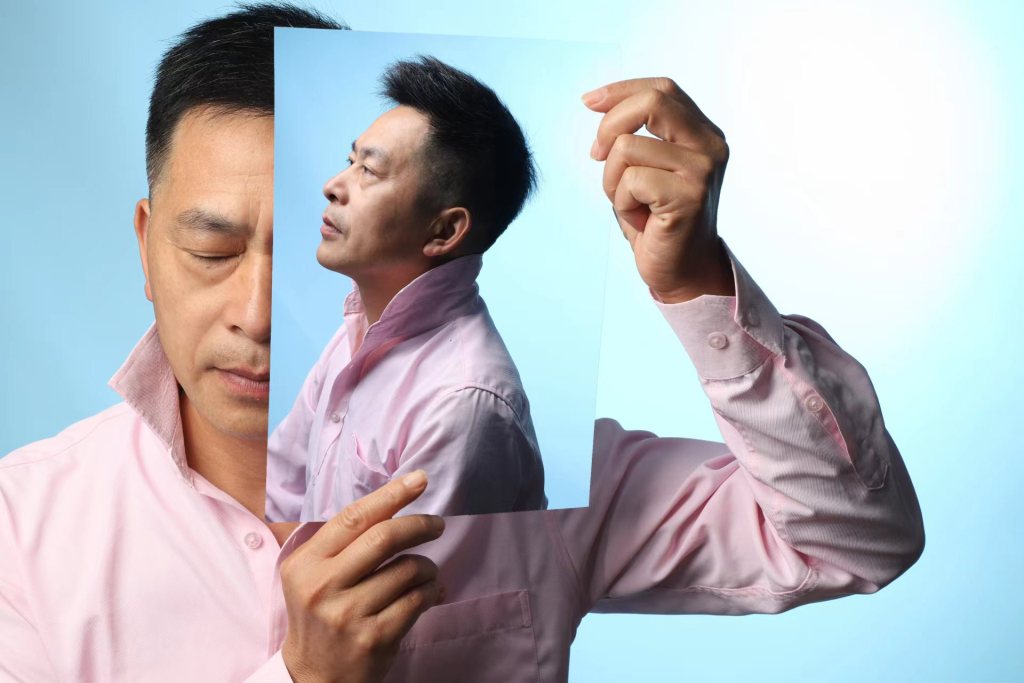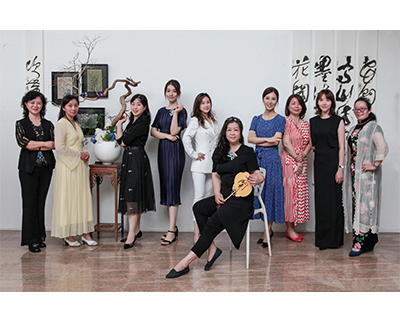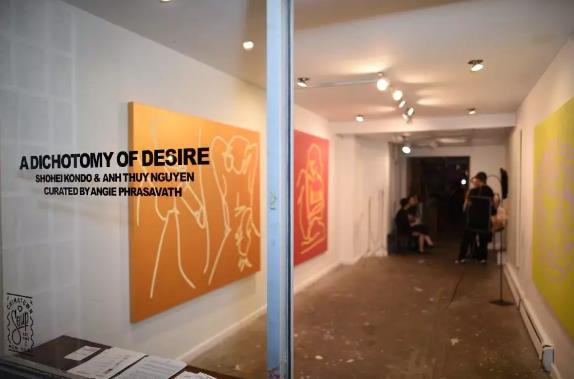
“欲望的二分法”展览现场
关于“欲望的二分法”
about "A dichotomy of desire"
文/沃欣雨
article/woxinyu
日本视觉艺术家shoheikondo和越南当代艺术家thuy nguyen的双个展:欲望的二分法,于4月18日在美国纽约唐人街开幕,作品包括装置,雕塑和绘画。
A double individual exhibition ofJapanese visual artist shoheikondo and Vietnamese contemporary artist thuynguyen ,curated by Angie Phrasavah :A dichotomy of desireopened in NewYork's Chinatown on Aprilv18. The works include installation, sculpture and paintings.
很多艺术家都有其固定的“标签”或者符号,似乎这种有着品牌化的特征的艺术家会在某些程度上给人一种安全感。然而shohei恰恰相反,他的创作面貌充满着非常不稳定的因素。在我两年前认识他的时候,他的兴趣点在于研究电子乐合成上,在一年之后他展示了许多用游戏做的作品,然而如今他又回归到当初的,用最直接的架上绘画表达的方法。纵观他这几年来的作品,可以发现他一直处于不断变化的过程,且没有明显的纽带关系,这种不走线性模式发展的艺术家是少之又少的。
Many artists have their own fixed"label" or symbol. It seems that this kind of artist with thecharacteristics of branding can give people a sense of security to some extent.Shohei, on the contrary, is an artist whose works are full of unstableelements. When I met him two years ago, he was interested in studyingelectronic music composition. A year later, he showed many works made withgames. However, now he goes back to the original way of using the most directeasel painting to express himself. Throughout his works over the past fewyears, we can find that he has been in a constantly changing process, and thereis no obvious bond. And there is very few artists who don’t develop within thelinear model.
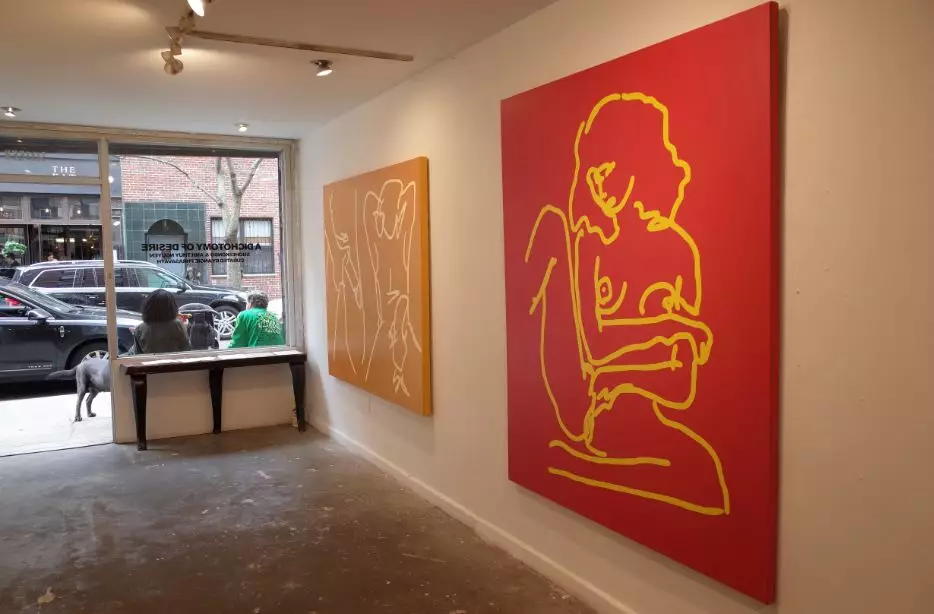
“欲望的二分法”展览现场
在这里说到的线性模式,就是很早就找到了可以代表自己的元素,且一直拓展出以这个元素为主的各种可能性的这种模式,kaws和草间弥生就是这样的艺术家,不得不承认他们的作品呈现出很强的爆发力和存在感,就好像一阵巨浪拍过,你很清楚它的方向在哪里,也知道它会带来多大的能量。但如果要给shohei的创作模式下一个定义的话,我觉得他的研究思路就像有很多分支的溪流,今天可能干涸,明天可能汇入大海形成巨浪,后天可能形成瀑布,那么这样的艺术家是充满着无限的可能性和生命力的,因为他不会把所有的鸡蛋都放在一个篮子里。
The linear model mentioned here isthat an artist has long found an element that can represent himself, and hasexpanded various possibilities based on this element. Kaws and Kusama Yayoi aresuch artists. I have to admit that their works show a strong explosiveness andpresence, just like the beat of huge waves, you know where it is, and how muchenergy it will bring. But to define shohei's creative model, I think hisresearch ideas are like streams with many branches which may be dry today andmay become merged in the sea to form a huge wave tomorrow, and a waterfall theday after tomorrow. Such an artist is full of infinite possibilities andvitality, because he will not put all the eggs in one basket.
之所以这么说是因为,第一,每次他对创作元素,方法关注点的转移并不意味着上一组创作的终结,而是恰好把上一组作品的优势结合到了下一组作品里。我记得shohei最先是做实验影像出身,这次展览他带来的是一组跟禅宗有关的绘画。他的作品评论存在着很大的两极分化,有很多人会对这种看似简单的色块和线条表示反感,因为他们关注的是作品创作的过程(且这种创作过程是被既定的),似乎作为绘画如果体量不大就对不起画布所占的空间。我对这种想法表示理解,过分简单或者不在体系内的事物的确容易被人误解。但我在他的绘画中看到的不是仅仅看似平滑的,数码打印般的画面。shohei选用的线条和背景颜色的组合,是他的这组禅宗绘画的优秀之处,他的每幅绘画最终都会给观众呈现出一种电影镜头般的强烈效果。
The reason for this is that, first ofall, every shift of his focus from one creative element and method to anotherdoes not mean the end of the previous set of works, but just the combination ofthe strengths of the previous set of works into the next set of works. Iremember shohei was first trained in experimental photography, and he broughtwith him a set of paintings related to zen to this exhibition. There is a greatpolarization in his works' comments, and many people will be disgusted by thisseemingly simple color blocks and lines, because they focus on the creationprocess of the work (and this creation process is established), and they alsobelieves that if the painting is not large, it will not deserve the spaceoccupied by the canvas. I understand this idea that too simple things or thingsout of the system are really easy to be misunderstood. But what I find in hispaintings is not just a smooth, digitally printed picture. The combination oflines and background colors selected by shohei is the essence of this group ofzen paintings, and each of his paintings ultimately presents the audience astrong cinematic effect.

“欲望的二分法”展览现场
我想这正是学习过镜头语言的艺术家的优势,他们知道如何在第一时间把要呈现的东西表达出来,因为影像不同于绘画,在架上绘画的概念里没有时间观念,观众可以随心的调整观看模式。而影像作品里决不允许出现任何一个无用的镜头,所以这样的特质决定了shohei的绘画可以在第一时间抓住观众的眼球,他非常关心观众可以看到什么,而不是意识流的讲一堆废话,并迅速的通过这些跟“禅”有关的色彩把观众带到他营造的那个语境里。且很多艺术家对于如何恰当的选用语言去表达主题不是很专业,但shohei知道选用什么样的颜色,如何调整饱和度和明度,可以恰好让观众感受到他要表达的“禅”和“性”,这个过程他做的是相当严谨的,也正是一个优秀艺术家他的专业度的体现,而不是随便摆一堆东西自说自话。所以在上文提到的所谓的,简单的创作过程其实一点都不简单。
I think this is the advantage ofartists who have learned lens language. They know how to express what they wantto present in the first place. Because image is different from painting, thereis no concept of time in easel painting, and the audience can adjust theviewing mode at will. However, video works never allow any one useless lens,which determines that shohei’s painting can grab the audience's attention atthe first time. He was very concerned about what the audience can see, ratherthan a stream of consciousness about a bunch of crap, and he can quickly takethe audience to the context created by him by the color related to"zen". Moreover, many artists are not very professional about how toproperly choose the language to express the theme, but shohei know to choosewhat kind of color, how to adjust the saturation and lightness to let theaudience feel "zen" and "sex" he wanted to express. Theprocess he did was quite rigorous, and it was the embodiment of hisprofessionalism of a good artist, rather than just talking about a bunch ofthings and talking to himself. So the so-called, simple creative processmentioned above is actually not simple.

“欲望的二分法”展览现场
第二,这种如同有很多分支的溪流的艺术家的优秀之处正是在于,他们的关注点不会拘泥于某个元素,某个要表达的主题,而是关心最终让观众感受到的力量,因为元素和方法是随着要表达的主题的不同而作出相应的改变的,甚至要表达的主题也有可能随着艺术家认知的改变而变化。今天我们可以讨论政治,明天就可以思考环境保护,我所关心的只是怎么样让观众感知到我所要传达的某种讯息,因为艺术本身就是一门语言,没有人规定你一定要讲哪一种。
Secondly, the excellence of this kindof artist like a stream with many branches is that their focus is not on acertain element, a theme to be expressed, but the concern on the power that theaudience ultimately feel. Because the elements and methods changecorrespondingly with the theme to be expressed, even the theme to be expressedmay change as the artist's cognition changes. Today we can discuss politics,and we can think about environmental protection tomorrow. All I care about ishow to make the audience perceive some kind of message I want to convey,because art itself is a language, no one stipulates which one you must speak.
说到语言,这让我想起了以前我和shohei讨论过的一个关于身份的问题,他表示:我是一个自由人,我不属于哪个国家,我不属于哪个流派,哪个组织,每一个界定的区域对我会有影响,他们造就了我,我的身上某一部分来源于他们的,但这并不意味着我被某个区域或者流派捆绑。他的身上没有任何的极端的身份标识,我想这和他天秤座的性格有很大关系,总是擅长找到平衡而优美的那个点,可以把握好这种尺度。在他的画面中我看到了源自东方的,线条的概括,因为以线造型源自东方,这就致使出生于东方的shohei对于线条有着高度的敏感。而他这种对于镜头,色块,和直接表达手法的修养又是在西方的土壤中被培养出来的。
When it comes to language, it remindsme of a question about identity I discussed with shohei before. He said: I am afree man, I don't belong to any country, I don't belong to any genre andorganization. Every defined area has an impact on me, they made me, and a partof my body comes from them, but that doesn't mean I'm bound by a certain areaor genre. There is no any extreme identity on him, I think it has a lot to dowith the personality of his constellation, libra is always good at finding abalance and beautiful point, and can grasp the scale. In his paintings, I cansee the generalization of lines from the east, because the shape of line comesfrom the east, so shohei who was born in the east is highly sensitive to lines.His knowledge of lens, color and direct expression was cultivated on the soilof the west.
作为在纽约工作的日本艺术家,他的作品很好的结合了东方和西方各自的营养,他身上拥有的这种自由,和对身份的平衡和把控的特质,使得他的面貌非常的焕然一新,注定了他是一个非常被值得关注的优秀艺术家。
As a Japanese artistworking in New York, shohei well combines the nutrition of the East and the Westin his works. And the freedom he possesses, the balance of his identity and thequalities he controls make his works fresh, which determines that he is anexcellent artist worthy of attention.
CV
Shohei Kondo (b. 1986, Japan) is a New York-based artistfrom Japan. His work has been exhibited internationally and venues including,Amakei Gallery (Japan), CAA Museum (China), and SVA Chelsea Gallery (UnitedStates). He is the recipient of the Sanwa Award (Japan) and his work is inprivate collections in the United States and Japan. Kondo holds a BA in FilmStudies from Takarazuka University of Arts and MFA Fine Art from School of VisualArts in New York.b.1986,Hyogo, JapanLivesand works in New York.
近藤翔平(出生于1986,日本)是一位在纽约工作和生活的日本艺术家。他的作品已经多次在中国美术学院美术馆,纽约视觉艺术学院chelsea画廊(美国),Amakei画廊(日本)等国际平台上展出。他是日本三瓦奖的获得者,多幅作品在美国和日本被私人收藏。近藤毕业于日本的宝冢艺术大学,并获得媒体艺术的学士学位,后在纽约视觉艺术学院的纯艺专业学习,获得艺术硕士学位。
-
展讯 | 以梦为马——刘长静个人作品展
以梦为马——刘长静个人作品展将于8月23日在京与观众见面 -
紫尘艺术空间展讯 I 吴佳芮【云纹漫卷处】坦培拉作品展
吴佳芮的作品追求随性与浪漫,落笔自然,意由心生,体现着别样的韵味,追求心灵的和谐... -
艺履•美术馆 | 纪念舒同诞辰120周年书法特展(上)
今年是舒同诞辰120周年,本平台特分批推出《舒同书法特展》,以作纪念。 -
2025年“安徽有礼”旅游商品大赛公告
2025年“安徽有礼”旅游商品大赛公告 -
传承红色基因:纪念抗战胜利80周年将军及书画名家艺术巡展启幕
传承红色基因:纪念抗战胜利80周年将军及书画名家艺术巡展启幕 -
抽象艺术的破冰之旅——走出国门的东方抽象
抽象艺术的破冰之旅——走出国门的东方抽象


